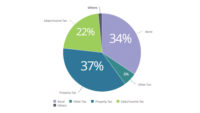Transportation agencies have been near the front of the pack in getting American Recovery and Reinvestment Act funds out the door. In highways, state depts. of transportation have $16.8 billion in ARRA projects under construction, says David Bauer, American Road & Transportation Builders Association senior vice president. That represents 63% of ARRA’s $26.7 billion in formula highway aid. “If it’s under construction, it’s supporting employment,” he says.

U.S. Dept. of Transportation reports strong progress in other ARRA categories. Nearly all the $1.1 billion in airport grants has gone to projects under way or since completed. Transit capital funding has moved out rapidly. Further, DOT on Jan. 28 awarded all the $8 billion ARRA provided for high-speed rail grants.
In highways, the largest ARRA construction category, the flow of funds has varied among the states. The Lane Construction Co., Cheshire, Conn., works in 15 states and has seen mixed results from ARRA. Robert Alger, Lane president and CEO, says, “In Maine it helped us, in Massachusetts [and in South Carolina] it helped us.” But, he adds, “Our revenue was down in the other states.”
ARRA highway funds first focused on small, ready-to-go resurfacing jobs. Bob Luffy, president and CEO of American Bridge, Coraopolis, Pa., says most major civil works his firm would have pursued, including bridge projects, weren’t ready to go. But Luffy sees more large jobs ahead, saying, “I think...we’ll start to see the effects about the third quarter of this year.”
Andi Vigue, president of Cianbro Corp., Pittsfield, Maine, says ARRA allowed underfunded projects, mainly in transportation, to be “awarded and put under construction.”
For example, $45 million from ARRA enabled work to start two years earlier than anticipated on a $109-million interchange rebuild in Clearwater, Fla., the Federal Highway Administration says.
More big projects are coming. Some of the $8 billion in high-speed-rail aid will go for individual projects, but larger sums went for corridor plans.
The top award was $2.3 billion for California. DOT has $2.5 billion more for high-speed rail in its 2010 appropriations. By Feb. 17, DOT also will announce winners of $1.5 billion in ARRA Transportation Investment Generating Economic Recovery (TIGER) grants for major national or regional projects.
DOT Secretary Ray LaHood expects Congress to pass a new jobs bill soon. When the final version emerges, he says, DOT will “be in for a significant amount of dollars to continue the progress we made last year with our portion of the economic recovery.” Malcolm Kerley, chief engineer at Virginia DOT, says VDOT is already selecting projects for a possible new stimulus. VDOT expects to get about the same as it did in ARRA.
Granite Construction Inc., Watsonville, Calif., has benefited from ARRA, with $200 million in stimulus work, including transportation jobs. Dan Galvin, a Granite spokesman, says, “‘Stimulus I has not been the silver bullet...and it is unlikely Stimulus II will be.” The key will be a sizable, long-term highway-transit bill with reliable funding.




Post a comment to this article
Report Abusive Comment